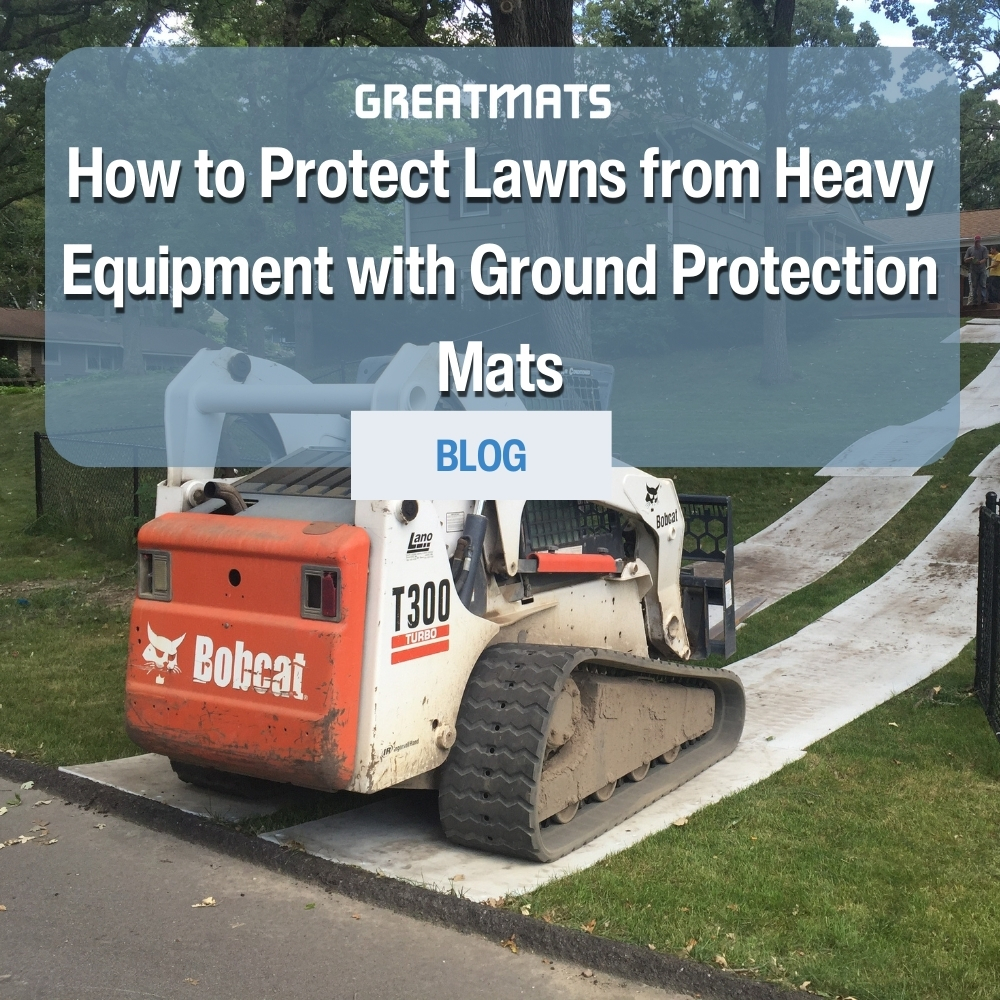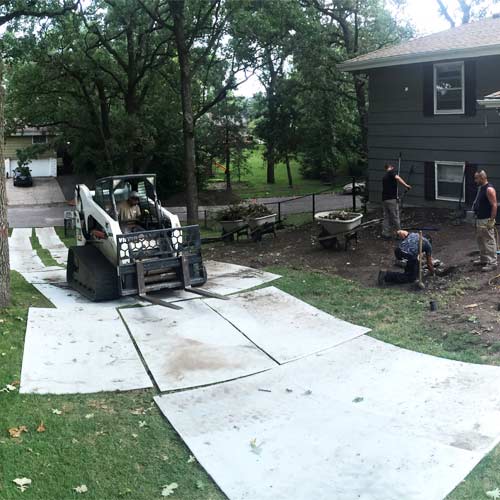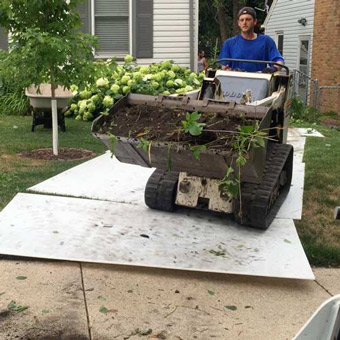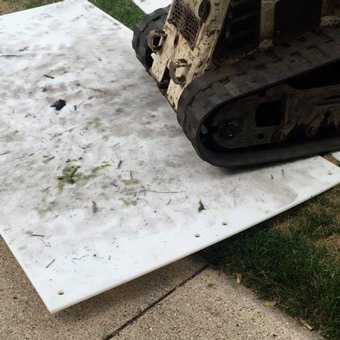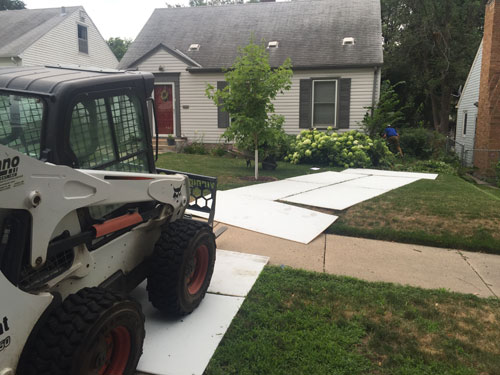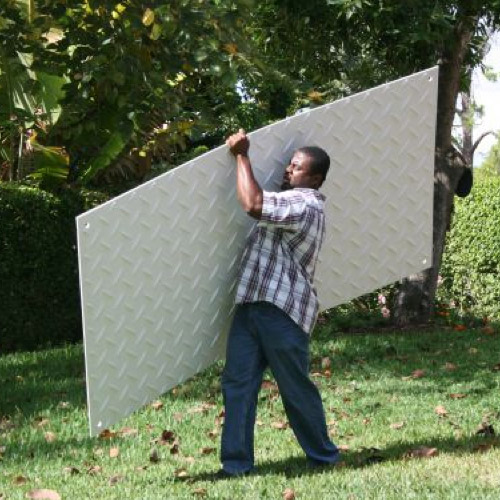How to Protect Lawns from Heavy Equipment with Ground Protection Mats
Related Product: Ground Protection Mats Black 1/2 Inch x 2x8 Ft. Diamond/Diamond
Luckily, at Greatmats, we have solutions that will help minimize the damage that heavy equipment will do to a lawn.
So whether you need to do a quick construction project or are planning a much more involved project, you can preserve and protect your lawn from damage. Construction company? Heavy machine operator? Homeowner? Our grass protection mats are an excellent solution for anyone.
How Heavy Equipment Damages Lawns
Heavy equipment and the soft surface of a lawn don't mix well. Lawns are a relatively soft surface, and they're covered in grass, which can be killed quite easily. If you're working after a recent rain, the lawn will be even more squishy, and the damage will be more extensive.These are just a few of the problems that you may encounter when operating heavy machinery on a lawn:
- Rutted ground
- Destroyed areas of grass
- Mud
- Excessively compacted dirt (which makes it hard for the grass' roots to get air and water, and makes the soil slow to drain)
Repairing a damaged lawn takes time, but it's best to avoid the problem altogether. In order to do this, some heavy machinery operators use plywood to create a makeshift ''road'' that keeps the machinery up, off of the lawn. But, that isn't an ideal solution.
Is Plywood A Good Solution For Protecting Grass?
Plywood poses many different problems when used with heavy machinery outdoors.- Heavy: Plywood that is thick enough to withstand the weight of heavy equipment is heavy to lift, so transporting it isn't easy. This problem becomes even worse if they're wet.
- Awkward: Large plywood sheets are best for creating a road because they'll cover more area, so you need fewer pieces. However, carrying plywood is difficult and awkward, especially since there are no handholds.
- Expensive: Plywood isn't cheap, and purchasing plywood for a single project, or replacing it multiple times, can be a major expense.
- Slick: When plywood gets wet, it becomes slick. Machinery may slip on the plywood, especially if it's raining out or if there's lots of mud present.
- Poor durability: Plywood simply isn't made to withstand the rigorous, repeated outdoor use that it sees when used to create a road. It will gradually warp, crack, and weaken. Your investment in plywood won't last for too long, and soon you'll have to purchase all new materials.
In short, plywood isn't a practical solution for most projects. That's why Greatmats has turf protection mats made specifically for the task.
Why Should You Use Lawn Protection Mats?
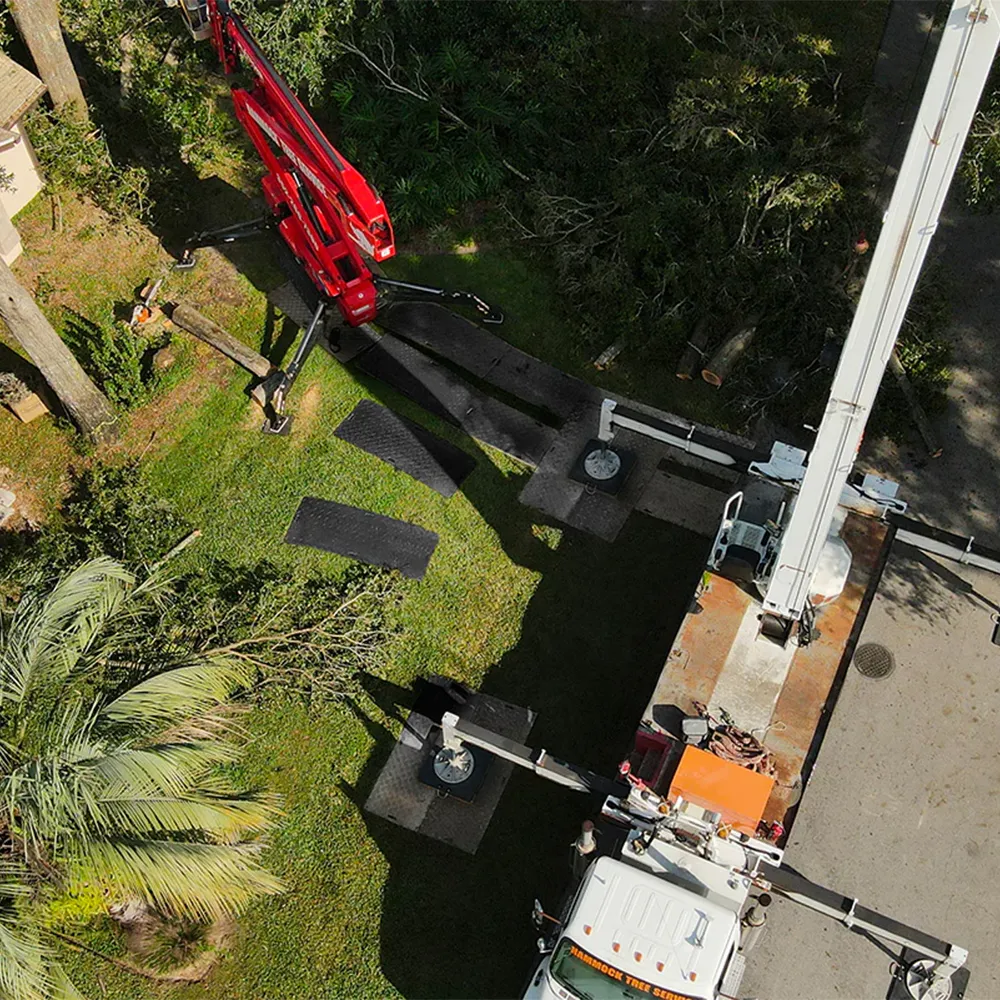
Lawn protection mats help to minimize the amount of damage that heavy machinery causes as it travels across or is used while on a lawn. These grass protection mats are specifically manufactured for the task at hand, and they're far more effective and easier to use than plywood. The majority of mats are made of heavy-duty polyethylene plastic, and some are made of fiberglass.
Heavy equipment mats create a temporary ''road'' of sorts for you to drive equipment over. Rather than worrying about the tracks or wheels of heavy equipment digging down into the turf, this temporary road minimizes the effect of the machinery. You won't tear up the turf surface, sink, or inadvertently create muddy areas that worsen the problem.
Benefits of Heavy Equipment Protection Mats
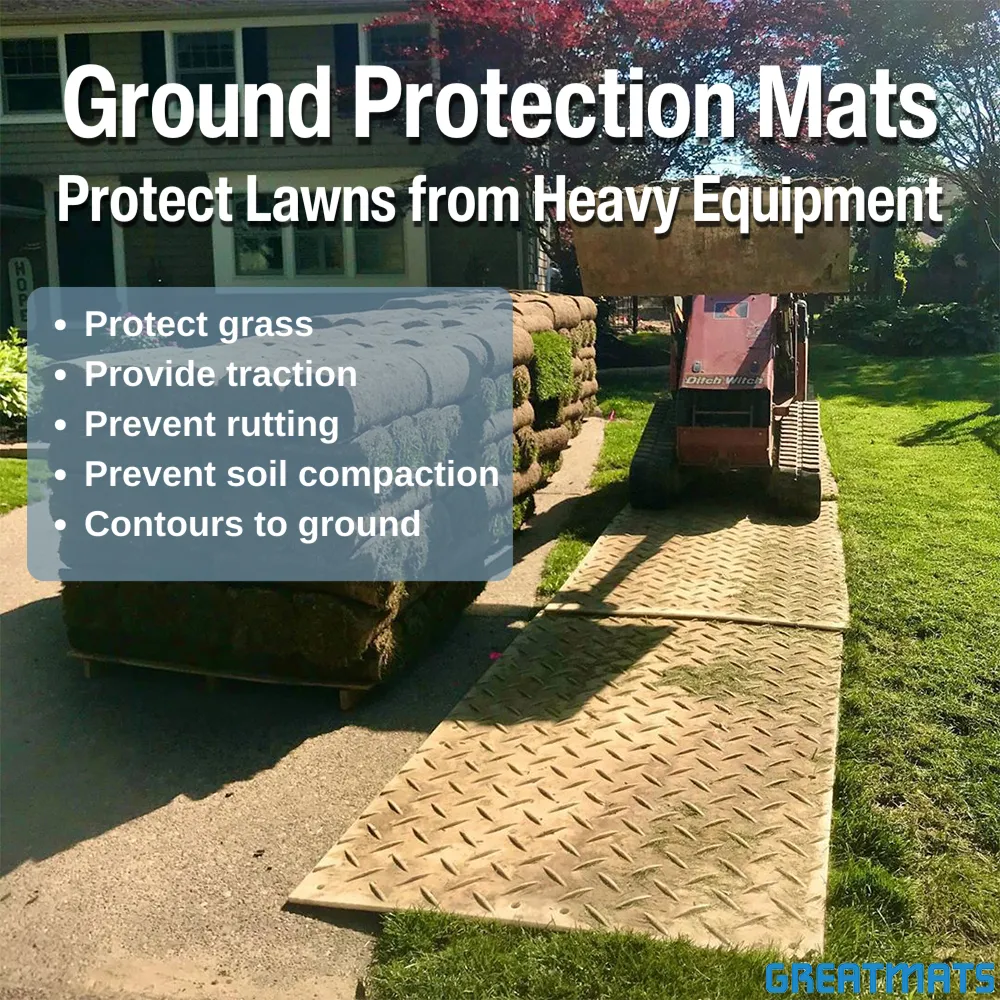
Heavy equipment protection mats offer many benefits, including:
- Minimize the damage that heavy machinery does to a lawn
- Create temporary roads that allow you to travel through difficult surfaces, like sand, gravel, and dirt
- Prevent heavy equipment from getting stuck, saving you time and reducing potential damage
- Reuse the mats time and time again; they're a solid investment for any construction or landscaping business
- Easily transport, lay, and remove ground protection mats, which are designed with convenience in mind
- Impress your client by showing the steps you're taking to keep their property looking great.
Highly durable, these mats are designed to withstand project after project, so they're well worth the investment if you know that you'll need to repeatedly work on or travel across lawns.
Choosing the Right Lawn Protection Mats
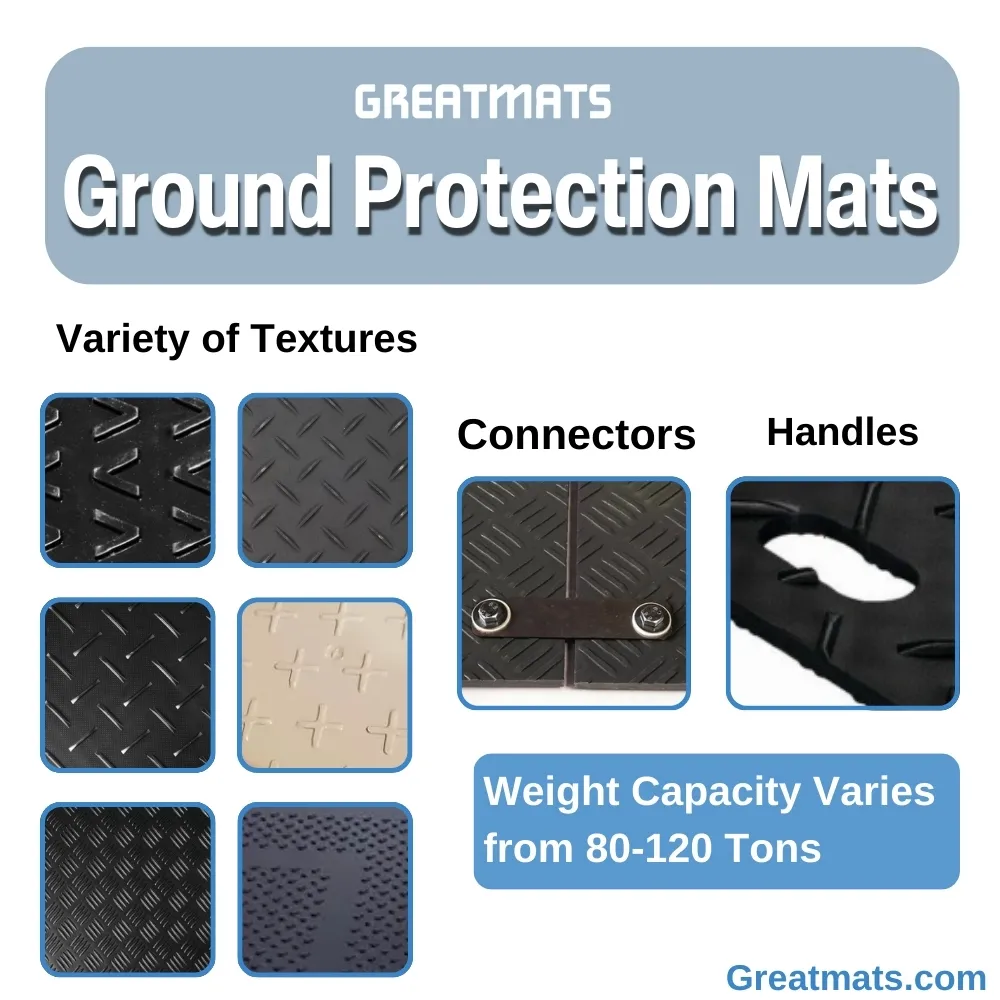
We offer a variety of lawn protection mats, each with some different features. As you look at the different mat options, consider the following features.
Size: Lawn Mats are Available in a Variety of Sizes
The right size mat will depend on the size of your machinery, as well as the size of the project you'll be performing and the area you'll need your mats to cover. Smaller mats are easier to move and store but aren't practical if you need a large road or area covered.
Clear Versus Colored: Lawn Mats are Available in Both Clear and Colored Designs
Clear ground protection mats allow for UV penetration to accommodate grass growth. This is particularly important if you anticipate the mats being in place for longer periods of time.
Weight Capacity: Be Sure to Consider the Top Weights of Your Heaviest Equipment
Choose mats that can support that weight; many heavy-duty options are available to support even the heaviest machinery.
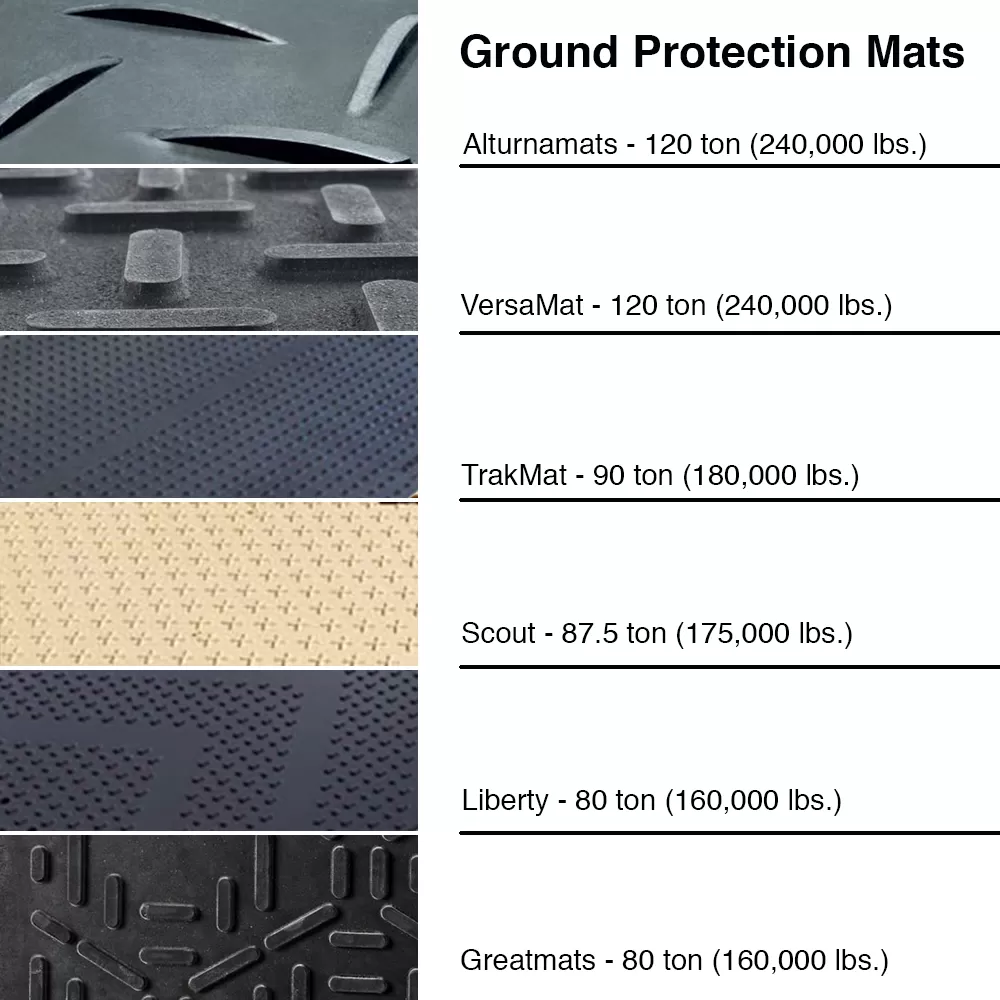
Transportation Options: Many Designs are Available to Make Transportation Easier
Built-in handholds and even rope handholds are a few of the designs that make the mats easier to transport.
Mat Surface: Lawn mats are Available with a Variety of Different Surface Patterns
Look for a surface that will help to maximize traction for your machinery. Consider the environment that you'll be working in - will there be mud on your machinery? Does your machinery have tracks or wheels? These factors will help to determine the type of mat surface that will work best for your outfit.
Connection Systems: Mats Connect Together Using Different Pin and Clip Systems
If you need mats that will connect together to create a unified surface or road, then think about the type of connection system that you want. Look for mats that connect together securely, so they won't separate during use.
Ground protection mats are an excellent way to keep your project moving along smoothly while minimizing the impact your machinery has on a lawn.
Additional Tips to Help You Minimize Lawn Damage
In addition to investing in yard protection mats, the below tips can help you to minimize the damage that machinery creates.- Never park machinery on a lawn. Always park machinery either on top of the lawn protection mats, or, ideally, park machinery in a designated parking area off of the lawn.
- Choose workdays carefully. Watch the weather and schedule work based on the forecast. Avoid working during or directly after heavy rain.
- Plan trips across the lawn. By planning your trips with your machinery, you can minimize the number of times that you have to travel across the lawn.
- Keep machinery balanced. By carrying an even load and keeping your machinery even, you can further minimize the damage you do to the lawn.
- Carefully choose your machinery. Wheeled machines generally do less damage when the ground is firm. If the ground is soft, though, use a machine that has tracks so you don't create trenches with wheels. Lawn protection mats can minimize the chance of this happening, though.
- Be upfront with the property owner. Before you start a project, discuss the potential for damage with the property owner. Specify what steps you'll take to minimize the damage, and what will be done if damage does occur.
- Always have a contract. In your contract, be sure that you state in writing what you will do to minimize lawn damage. Always include the cost of resodding or reseeding the lawn in your project estimate, so this doesn't come as a surprise to the property owner later on in the process. If resodding or reseeding isn't ultimately necessary, then the owner will be happy to find out that you've come in under budget.
- Consider aerating a lawn after a project. Aerating a lawn can help to fix compaction issues, encouraging healthy grass growth.
Lawn Protection Mats: A Sound Investment from Greatmats
The initial investment in lawn protection mats can be a large one, but you'll quickly find that the mats are well worth their cost. Just think of the savings you'll see in terms of resurfacing and reseeding. Additionally, these mats can help to minimize client frustration and disappointment in your work. When you use these mats, clients understand that you're invested in your work and that you truly care about their property. You may get more client referrals and repeat business based on the great performance that these mats allow you to put into each job.If you have questions about heavy equipment mats or need some help deciding which option is right for your team or project, please give our customer service team a call. We would be happy to help you find the product that's just right for your needs.

